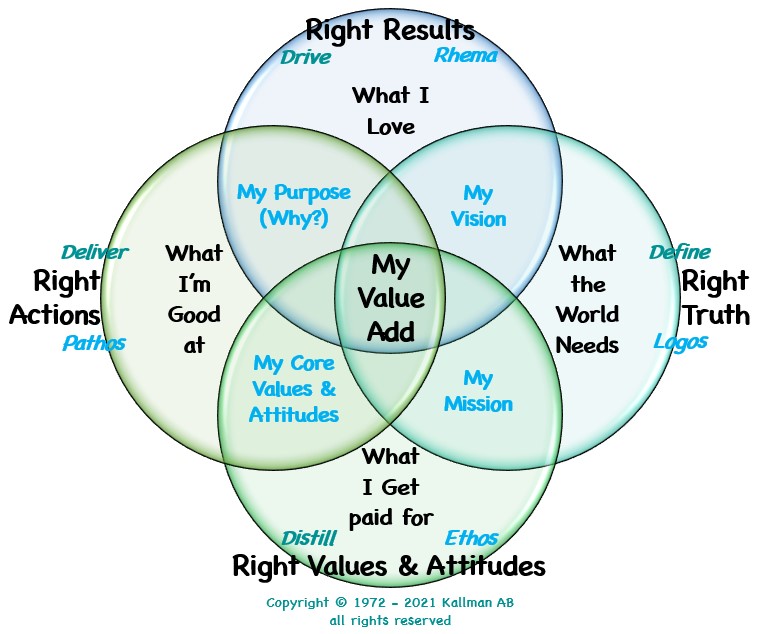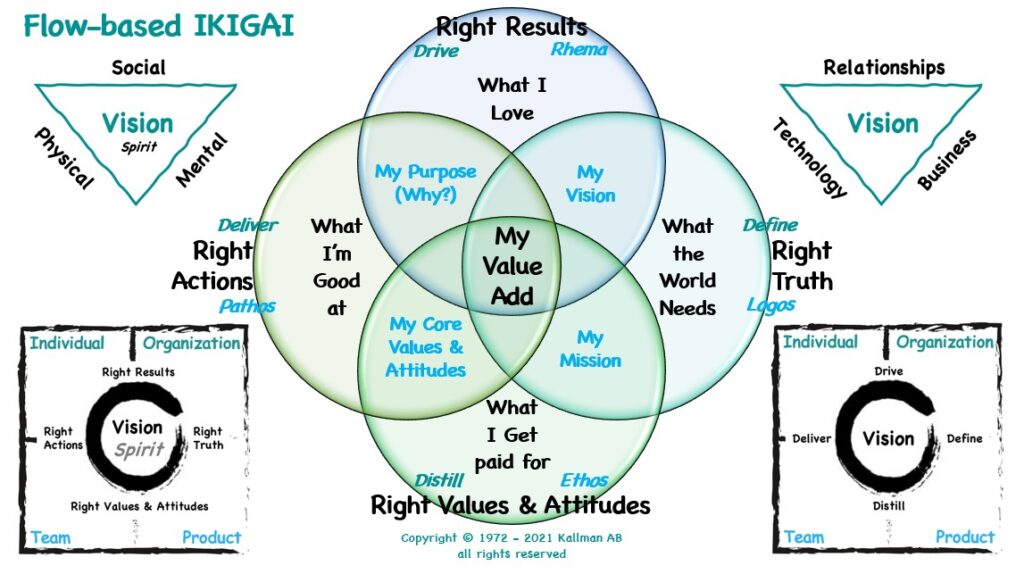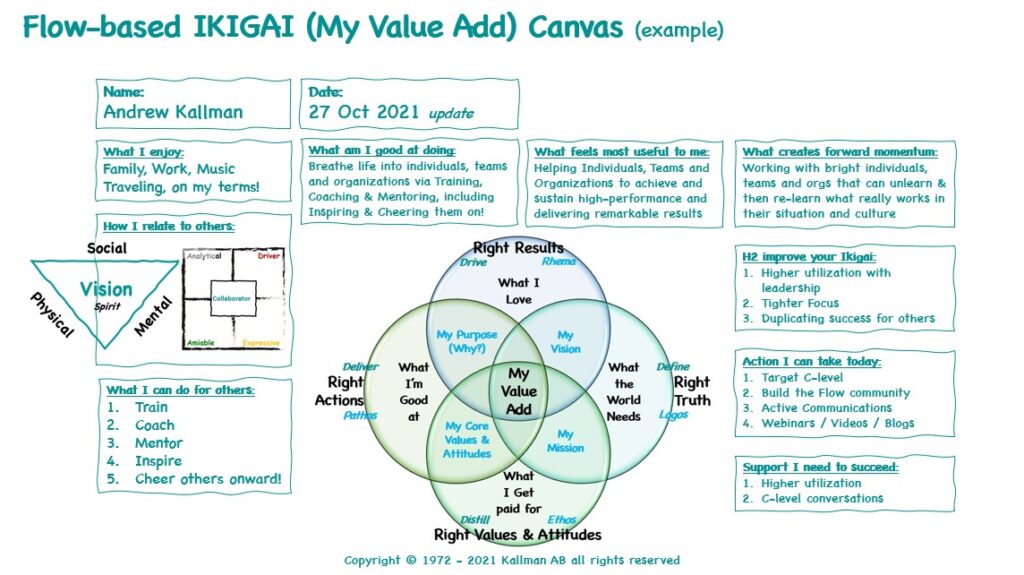Anyone that has worked with Agile for any length of time will have encountered the Ikigai (pronounced “icky-guy”). At the end of this post you will see an example of a canvas that you can use to do your own Ikigai exercise.
In order to not create too much confusion, I will share only the modified, Flow-based version of the Ikigai (and not the original – see Google for examples of those).

In this picture I have integrated Vision, Mission, Core Values and Purpose along with the 4R Model (Right Truth, Right Values & Attitudes, Right Actions, Right Results), the 4D Model (Define, Distill, Deliver, Drive) as well as Greek rhetoric: Logos, Ethos, Pathos and Rhema).
Ok, Rhema’s not part of the original three tools of Greek rhetoric (apologies to any purists out there). What I like about Rhema is that it can be roughly translated: “word in action.” And, as most of you know, “logos” in Greek is “word” in English.
Btw, for those that are looking for Passion, Profession and Vocation that are included in the original Ikigai diagram, I have swapped those out for Flow concepts. For example, “pathos” is the root word in Greek from which we get our word for “passion” in English.
Like with most other models, it can go from relatively simple to quite complex in a heartbeat. Here’s an expanded view of the model where I’ve also included the “triangles” we use in Flow:

All of these models are great theory and work in real life. If you are interesting in diving deeper into each of the models, then here are the searches on my website for the 4D Model and the 4R Model.
Click on either of the following links if you would like to see some posts on the Mental-Physical-Social triangle and/or the Business-Technology-Relationships triangle.
And, if you want a really good post on personalities, then you’ll want to look at my post “What’s your Passion #44 – Leadership & Personalities.”
Where this really becomes useful is the use a canvas approach and take the time to do an individual exercise. It’s been three years since I last reviewed my Ikigai and the tweaks & updates were minimal. Here’s an example:

Ikigai is not easy!
Since it takes some personal time & effort to do this exercise, then you will get out of it what you put into it. Many people see value in doing these. For example, if you are not getting the desired results from a team member, then it might be good to use this template to do a personal retrospective with them to help them focus and clarify. The root cause might be as simple as their personal Vision does not align with the team’s Vision.
Btw, join us for a webinar on Accelerating Business Performance on 29 October 2021 (3 pm Finnish time for session 1 -and- session 2 at 8 pm Finnish time). Click this link for more information (for your time zones, etc.) and also to register (required to attend).
Not using Flow yet? Let’s chat!
__________
For those that are not familiar with the Flow Leadership Framework & Mindset, it is what’s next for businesses and organizations that are ready to succeed regardless of the methods, frameworks or management tools that they use throughout their enterprise. Flow is methodology agnostic.
Are you ‘in the zone’ of optimal performance right now as a person, team or enterprise? Did you get there by accident or by focused intentional acts?
“Flow” gives you the way of working and mindset needed to create and maintain an optimal state of high performance as an individual, team or organization.
The Flow Leadership Framework turbocharges everything you do, including “business agile” leadership and Scaled Agile.
__________
PS Here are the associated links to this blog post for:
#culture #scrum #agile #pmi #pmp #kanban #lean #flow #scaledagile #transformation #change #transform #leadership #digitaltrasformation #changemanagement #safeagilist #flowleadership #futureofwork #innovation